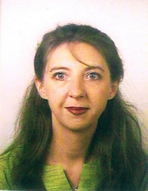THE USE OF SOCIAL MEDIA IN PHARMACOVIGILANCE
One of Pharmacovigilance's biggest problems is that very often patients do not declare their adverse drug reactions (ADR). According to an EMA study, patients don't report their ADR because they don,t know they can or should. 96% of ADR are actually unreported.
Nowadays, social media is welcoming more and more users and is becoming a massive communication tool. This mean allows the freedom of speech to a point where patients feel really free to narrate their experiences, including when they're using X or Y drug. Actually, thanks to a study, specialists have noticed that people (in the US) are more likely to report an adverse event through Twitter than to the FDA directly. Or in Facebook, we've all seen the rise of complaints to companies or people talking about a restaurant's service. This actually happens with pharmaceutical companies: people come to them through social media to talk about their experiences, satisfactions with drugs and eventually, their adverse events. There are as well, more open chatrooms, and blogs about specific diseases through which users tell their experiences not only about their disease but also about their use of drugs and medications.
The issue is that there is a real need for these pseudo-reports to be filtered by specialists, and for specialists to be able to recognize an adverse event report through these platforms. This process is called social media data mining for pharmacovigilance ends. Health Authorities are very open to use this method more and more since it allows them to enhance Pharmacovigilance, by welcoming to a new data entrance method - that yet needs a more careful surveillance than classic means of ADR reporting.
A correlation between this phenomenon and ADR reporting through classic declaration channels has been noticed.
Although it is true that there is an important under-report through official channels, social media is giving a voice to people that need to declare their medical experiences, and secondly, it is creating awareness to make people realize that they need to declare their medical experiences.
Even though this new method of gathering information seems to be uninjurious, for many experts, this recent pharmacovigilance “procedure”, could jeopardize patients' confidentiality. In several contexts, patients share confidential information about their treatment or illness with healthcare professionals: during a clinical trial, or simply when visiting the doctor or medical specialist. Healthcare specialists are required to keep this information confidential, since it could put the patient's trust at risk and therefore, risk the patient's treatment.
In social media, confidentiality is a very delicate subject. When a person registers in a social media platform, he or she has to accept policy and private agreements to get to use the platform. In common use social media platforms, privacy settings are put at the service of users, making them able to protect in some way their privacy according to what they wish to share off with other people. However, many people don't even read the small letters paragraphs, nor have the Internet/technology abilities enough to get to arrange privacy settings at their own will. We add to this, that many people don't even know that by naively sharing experiences, they could be accidentally exposing themselves by sharing to the wrong people, or organizations. We could take for granted that - at least - the majority of social media users is aware of this, but we cannot be so sure. This is the main reason that explains why pharmacovigilance through social media is still a hostile subject in the Life Sciences field.
Sources
- How could social media data be relevant to regulatory decision-making? , June M Raine, Social Media Workshop, PCWP and HCPWP Joint meeting, MHRA UK (19th September 2016)
- e-Santé : nouvelles perspectives pour la sécurité sanitaire ? , Marius Fieschi et Jean-Yves Robin, Open Health Institute Paris, France (20 octobre 2016)
- Confidentiality , Jessica De Bord, DDS MSD MA, Wylie Burke, MD PhD, & Denise M. Dudzinski, PhD MTS, University of Washington School of Medicine (2013)
- Mining Social Media for Adverse Events , Thomas Sullivan, Policy & Medicine (2018)
|
TECHNOLOGY/WEARABLE DEVICES IN CLINICAL RESEARCH
Wearable devices represent a big innovation not only in our daily routine, but also in the research field. With the complexification and growth of clinical trials registered worldwide, technology and devices seem to respond to the data collection current problematics: gain of time, simplification of procedures and regulatory compliance.
Regulatory authorities and worldwide medical organizations have defined the mHealth field, such as a “component of e-health, and a medical and public health practice supported by mobile devices, such as mobile phones, patient monitoring devices, personal digital assistants (PDAs), and other wireless devices.”(1)
Technology and wearable devices actually represent a gain of time in trials of every kind or length. For example, automatic blood pressure monitors represent a gain of time in a research: a patient will be taken his blood pressure by a nurse or a doctor less times in a day if he either has a device providing real-time data (which allows better monitoring of the patient) or if he can simply introduce a bracelet and push a button that will take his pressure for him and automatically transfer the data to the trial's database. Therefore, researchers will be able to actually focus on their trial's real issue: analyzing data, making and responding to hypothesis.
The use of these devices, analysts say, is in exponential growth. According to the World mHealth market: opportunities and forecasts, there will be 50 billion devices sharing 40,000 billion GB by 2020. We are looking forward to the digital era of clinical trials.
Sources
- mHealth and the Transformation of Clinical Trials: Harnessing data, advanced analytics, and the Internet of Things to optimize digitized clinical trials. Oracle White Paper, June 2017
- Using connected objects in clinical research, Jean François DHAINAUT et al, ScienceDirect.com, 2017
MEDRIO'S E-SOURCE

In September, we assisted to a Medrio Webinar on a Case Study that showed how Medrio's eSource is improving global collaboration and accelerating trial timelines.
They presented us and the other attendees the benefits of eSource and shared with us the technical differences between EDC and eSource, but also the advantages of eSource compared to EDC. For e-Source has become the latest way to manage clinical data in a research since:
- it helps you to get rid of all the paper excess by allowing you to keep in a digital form any document
- it brings to the study real-time and worldwide data analyzing and processing
These benefits have been brought with the newest eSource solution thanks to the problems that have been noticed while using EDC such as:
- legibility problems
- the need to have people comparing paper and electronic data
- slow monitoring of the study due to transcription periods
If you want to learn more, and understand why eSource is not making you lose your source data, but improves the way you manage the source data, we invite you to discover the benefit of eSource
|








